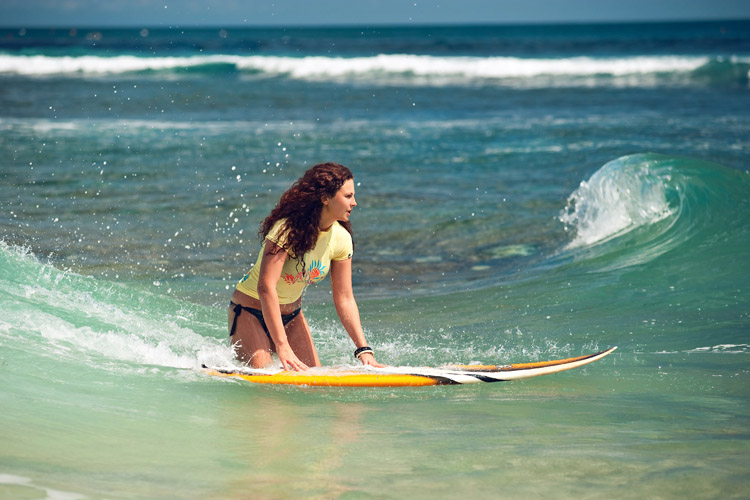Do you want to try surfing waves but don't have time or patience for overpriced surf lessons and bossy instructors? Watch the best instructional videos for learning to surf.
Have you decided to learn to surf? Start surfing in one day with a five-step video course that will help you with the equipment, the rules, and the basic techniques you need to ride your first waves.
People with low self-confidence, lack of equipment knowledge, and fear of waves tend to think that surfing is an impossible challenge.
But it is not, as long as they're determined to overcome their initial reluctance.
The following learn-to-surf video series will make you a surfer for life. Pay attention to each lesson, and re-watch them if needed.
These clips share all the information and tips you'll need to get up on a surfboard fast and easily.
1. The Pre-Surf Warm-Up
Begin with a five-minute jog, then perform key stretch exercises for your primary muscle groups, activating your quadriceps, hamstrings, lower back, shoulders, arms, and neck.
When you're done, train the paddling and pop-up technique on the beach. If you're a yoga enthusiast, practice a few surf-driven yoga exercises before entering the water.
2. The Beginner Surfboard
Picking the right equipment is critical to the surf learning process. Let's put it simply: the bigger the board, the faster you'll be riding waves.
Large surfboards provide all the stability you need to find balance and make the first mistakes.
Soft-top or foam surfboards are comfortable and will not harm you or others when you fall or wipe out.
If you're not sure about the ideal surfboard size for your weight and height, check out the surfboard size chart.
3. The Surf Etiquette
Surfing is a laid-back water sport, but there are some things you must know before paddling out. Surf etiquette is a series of rules that guide surfing.
Without these principles, surfing would be a chaotic activity with lots of accidents and injuries.
Remember that surfboards are pointy and heavy weapons that, in the worst-case scenario, may kill someone.
There are wave riding priorities, and exclusive rides, in case you don't know.
4. The Pop-Up and Take-Off Technique
Surfing is all about standing up on a surfboard and gliding through and across an unbroken wave.
In other words, surfers paddle for a wave using their arms and then pop up as quickly as they can before taking off on a roller.
First-timers in surfing should start catching as many waves as they can in the whitewater before moving to unbroken peelers.
5. Correct the Classic Mistakes
In their first surfing experiences, beginners make classic mistakes. The most common errors involve paddling and popping up while trying to get into the waves.
Nose diving is another chronic mistake. Novice surfers tend to position too far forward on the board, and they don't angle the surfboard in a steep and fast-breaking wave.
If you need more tips on how to surf, read our Beginners' Guide to Surfing.
